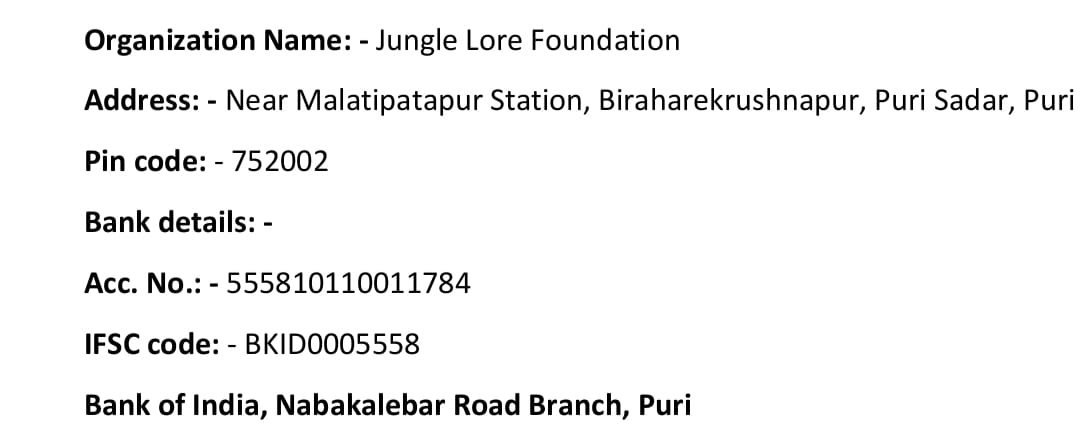Black bucks in Odisha
 Black bucks in Odisha wildlife and wild behaviour
Black bucks in Odisha wildlife and wild behaviour
Term ‘Antilope’ derived from Greek word ‘anthalops’ meaning horned animal; and the term ‘cervicapra’ from two Latin words as ‘cervus’ means deer and ‘capra’ means a sheep-goat. In India it is called by various local names viz., Kala hiran, Krishna mriga, Sasin, Iralai Maan, Krushna Sara, Kala baoutia and Krishna jinka.
Taxonomic Position:
| Kingdom | Animalia |
| Phylum | Chordata |
| Subphylum | Vertebrata |
| Class | Mammalia, Linnaeus, 1758 |
| Subclass | Theria, Parker and Haswell, 1897 |
| Infraclass | Eutheria, Gill, 1872 |
| Order | Artiodactyla, Owen, 1841 |
| Family | Bovidae, Gray, 1821 |
| Subfamily | Antilopinae, Gray, 1821 |
| Genus | Antilope, Pallas, 1766 |
| Species | Antilope cervicapra (Linnaeus, 1758) |
The subspecies found in the Odisha is Antilope cervicapra according to Grove (1980). This subspecies is distributed in Orissa and various pockets of Andhra Pradesh.






Black bucks are found in Odisha under a very complex habitats with agricultural land, pasture land, monoculture plantations, human settlements, water bodies and road networks. FromGhumsur south Division an area of 64.5 sq.km out of which 42sq.km is agricultural land dotted with trees and having drainages, ponds and other water bodies. About 10.2 sq.km is village pasture land and undulated foot hill terrain with scrub vegetation. The other area of 8.3 sq.km is human settlements including small urban areas and villages and 4 sq.km is under forest cover.
Blackbuck has important ecological roles in grassland ecosystem. It has genetic, medicinal (horns and skin to cure liver and heart diseases), scientific, aesthetic and re-creational value. In Hinduism and Buddhism, the horns and skin of blackbuck are used in rituals like ‘Bratabandha’ and in medication by Saints: respectively. In Australia, blackbuck has good meat value.
Male Black Buck ranges have been recorded from 5.4 sq. km to 3.15 sq. km. Home range has been popularly defined as “that area traversed by the individuals in its normal activities of food gathering, mating and caring for young. Home range characteristics are strongly influenced by the manner in which individuals of a species react to their habitat and to each other and are thought to reflect population features such as density and social structure.
Blackbucks are known to be traditional and have a strong tendency to return to their seasonal ranges over the year. Areas in Bhetnoi have been described as covered with grassland, cropland and scrub forest which are the seasonal choice of the blackbuck. The distribution pattern of blackbuck in these mosaic habitats differs seasonally according to the availability of food and agricultural activities.
Overall, the age-sex ratio of blackbuck in Bhetnoi was found to be 9.64 male: 14.57 female: 1 fawn. The sex ratio recorded in the mixed herd was 1 male: 3.58 female, while the adult sex ratio was 1 adult male: 6.28 adult female. The age-sex ratio of mixed herd was 1 fawn: 2.62 sub-adult male: 4.7 sub-adult female: 1.25 adult-male: 7•85 adult female. Black Buck population shows biased sex ratio in favour of females while male to female and fawn to female ratios were relatively the same in all habitats.
Schaller had during 1967 reported a population of 55 blackbuck near Chilika lake area. Dr. Behura in 1981 had reported 140 blackbuck in Ganjam district. Dr. M.K. Ranjitsinghji in 1982 had reported 700 blackbuck. Dr. Sudhakar Kar during 1998 had reported that in Balipadar-Vetnoi area, Ganjam district the population of blackbuck was 551.
Black bucks generally prefer grass lands 43.6%, bushes to 24.63% and crop fields 31.88% which is plentily available in this area.
Balukhand Konark Wildlife Sanctuary
This manmade forest situated between 19o 48” to 19o 55” N and 85o 51” to 86o 14” E. Altitude 0 to 15mtrs from mean sea level. This sanctuary is full of shifting sand dunes with alluvial patches along the rivers and river mouths.
Average rain fall is around 1900mms and temperature ranges from 15o C to 38o C.
Last population of Black buck (Kala Bahutia) recorded in three surveys during monsoon 2008, summer 2009 and winter 2009 where 4, 7 and 6 respectively.On 2014 they became extinct from Puri Division.
Threats
- Erosion of ethical belief
- Monoculture plantation
- Road accident
- Predation of calves
- Disease
- Inbreeding
Conservation measures-
1. Working with local community are partners, to work together, to meet these goals, to share the benefits, which may arise from conservation.
2. Education on local culture, belief, ethics and values of wildlife are given to new generation in school level for improving the relationship between Black bucks and people.
3. Working on policies and programmes to encourage with the belief, ethics and culture spreading from one community to other.
4. Working to improve farming methods to prevent wild animal’s invasion and enhance crop harvest.
5. Co-management model involving all land owners, EDCs, forest department personnel and NGOs.
6. Maintaining habitat areas as open grass lands, plantation for food and shelter.
7. Educating locals not to use pesticides and herbicides which are harmful to Black bucks.
8. Working on strengthening the existing veterinary hospital for improving the health conditions of Black bucks.
9. Discouraging sudden changes in cropping pattern.
- Promoting social conservation
At last, with all of these steps, local community will be leading the way in maintaining the intricate links between Black bucks and local culture for the long-term benefit of both.

